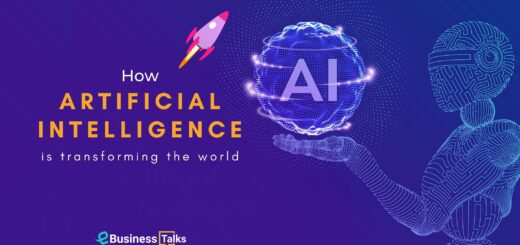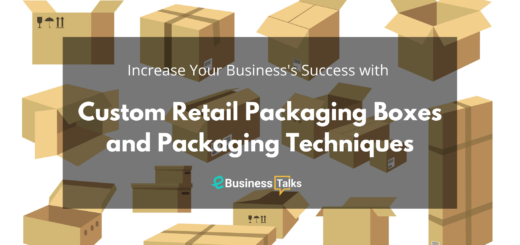Top Emerging Cloud Computing Trends to Watch Out

Over the last decade growth of emerging technologies has fuelled cloud growth exponentially. Due to its scalable and secure nature cloud computing has become integrated into many business operations from application development and management to managing tech infrastructures and powering remote work environments.
Cloud Analytics and related technologies that empower our modern digital experiences have disrupted IT Operation, Business Models and Markets. Though these now-familiar forces may no longer qualify as “trends,” their impacts cannot be overstated, and their storylines continue to evolve. Recently Blockchain, Cognitive and Digital Reality (AR, VR IoT and Others) have taken up the disruptor mantle. Today, each is poised to become a distinct macro force in its own right.
We are about to enter a new decade soon and the Coronavirus has pushed most IT companies worldwide to adapt to a new normal and provide a work from home environment to keep businesses running. This unfortunate catalyst may have changed the future of cloud computing. Cloud adoption has ensured a dynamic allocation of resources during the spike in the network. There is an increased demand for cloud and collaboration services globally let’s take a look at some of the top important cloud computing trends to make your cloud strategy future-proof.
Growth in Multi & Hybrid Cloud Environments

Statistics show multi-cloud and hybrid cloud as the reality for most companies. 74% of enterprises adopt hybrid/multi-cloud as their cloud strategy while 62% of public cloud adopters are using more than two unique cloud environments/platforms. Among many cloud computing trends, the fastest growing one is that Enterprises are embracing a hybrid cloud or multi-cloud ecosystem rather than sticking to one specific infrastructure or platform.
Businesses have now realized that cloud data management is about adopting a solution that fits the requirement rather than buying a one-stop solution and hoping it does the job. Businesses need to take advantage of capabilities and features from different cloud providers and get the most out of the benefits offered by the cloud services. These strategies can help cut costs, improve turnaround time, and control computing capacity.
This anomaly is not limited to cloud, a similar approach is being adopted for legacy or on-premise systems. Gartner has estimated that 17% of large to mid-size organization will adopt a hybrid or multi-cloud strategy. With the global lockdowns acting as catalysts to acceleration in cloud adoption that number is now expected to even higher. Cloud service providers will mostly form alliances to provide cross-platform differentiated capabilities and deliver an Omni-cloud strategy
Adhering to Compliance with Increasing Complexity

Dynamic regulatory environments make adhering to compliance obligations very complex. If you ask security, compliance, and IT professionals what keeps them up at night, the most common response is simple: data. It’s just one word, but it carries so much weight for organizations these days. The amount of data being created, shared, and stored today has grown exponentially. Adding to that, the requirements to keep it all secure, private, and compliant are more complex than ever before. From managing hybrid environments to keeping up with regulations, it’s vitally important that businesses find a capable partner to handles their data. Native CSP tools are not multi-cloud thus hiring more than one CSP complicates cloud management, governance and cost optimization.
The fact is, there’s no single solution to mitigate all the data threats that organizations face. Organizations will require an environment where they are in control of their privacy with easy-to-use tools and clear choices and they can benefit from transparency on data collection and use, for informed decision making. A vendor-agnostic approach will be best suited for businesses for adopting SaaS solutions that reduce bottlenecks.
Cloud solutions vendor will benefit from visibility across a heterogeneous environment. This will help organizations achieve a similar level of insight across the board, in various instances and platforms, without gaps. At present security and data privacy are top bottlenecks in cloud adoption by most enterprises and when it comes to mixing additional infrastructure the compliance become even more complex.
Controlling Cloud Costs will be a Priority

Gartner has estimated the revenue from public cloud globally will grow up to $266.4 billion by 2020, a 17% increase. By 2022 60% of businesses and organizations from all industry verticals will be adopting managed services offering from external cloud providers, almost twice from the 30% rise in 2018. The figures clearly show growth as an undeniable emerging cloud trend.
Organizational costs have shot through the roof with the decentralized model of consumption often without any control over the spiralling bottom line. As cloud usage grows with digital transformation, businesses will have to take control of the costs by adopting pay per use models cutting out unnecessary overheads. Cloud Solution providers offering granular insights into hybrid networks with a unified cost management approach will gain a competitive edge over the others.
Solution Focused Partnerships

One specific cloud computing trend we can expect to take impetus is the rise in the number of niche solution providers. As most businesses continue to adopt SaaS, PaaS and IaaS, for moving their infrastructure there will a rise in demand for third-party vendors with specialized expertise in problem-solving modern cloud challenges. When your cloud provider will be handling infrastructure needs like storage, the third-party vendors will be taking care of specific needs of compute and networking like data, visibility, AI and ML technology, or even IoT.
While the hardware element is being taken care of my Infrastructure leaders, the external partners will need better insight into cloud computing and its associated technologies. Businesses will need to assess partners based on skills, services or industry background to identify best-suited cloud solutions. A certified CSP will assess business goals for cloud adoption and help take full advantage of the cloud and make businesses more efficient and agile.
Demand for Tech on Demand is Ever Growing
More than 25 years of technology development stands as a testament to how software evolved. The development in software and hardware technologies opened gates to several new technologies like AI, ML, Bigdata, IoT etc and with the advent of cloud computing, those technologies were able to scale infinitely. Emerging technologies have driven impressive efficiency in all aspects of human life like Healthcare, Governance, Communication, Energy, Manufacturing, Education and much more. Once cloud costs are under control, many businesses will be left with profits at their disposal to take advantage of these solutions.
While businesses do that, solution providers will push out easily accessible innovation for a wide audience. These innovations will incur a low learning curve with a low-code interface making it more democratized for a larger group of people. Businesses will be able to predict the benefits of AI, ML and Automation without the help of Data Scientist and tangibly enhance business strategy.
Businesses and organization of all sizes have realized the potential of cloud and the value it adds. it is now at the centre of most growth strategies adopted globally. Access to emerging technologies is one most significant challenge faced by most companies but now they can utilize infrastructure with resources that are difficult to achieve on their own.
Organizations will be getting ahead of compliance and security challenges by partnering with innovative and smart, external solutions. These companies will allow forward-thinking customers to foresee immediate benefit from their targeted skills and expertise with their deep understanding of the new hybrid reality.













